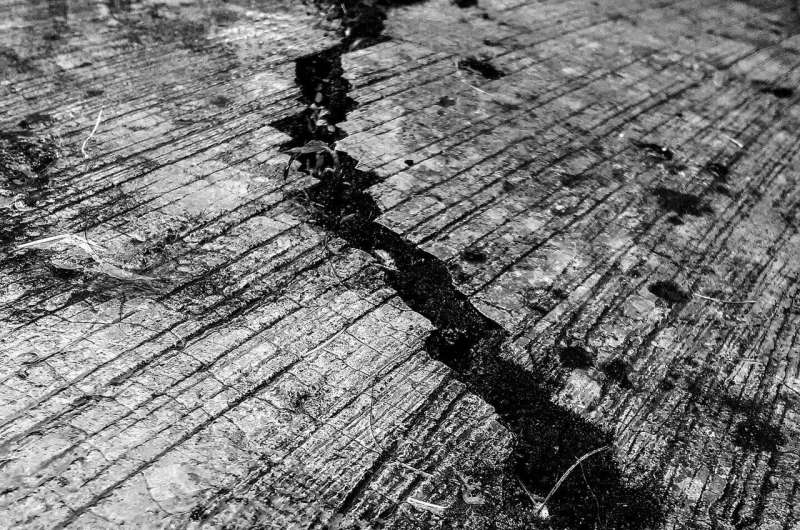This article has been reviewed according to Science X's editorial process and policies. Editors have highlighted the following attributes while ensuring the content's credibility:
fact-checked
peer-reviewed publication
trusted source
proofread
Hundreds of very shallow earthquakes detected in California's Long Beach and Seal Beach

Seismic arrays deployed in California's Long Beach and Seal Beach areas detected more than a thousand tiny earthquakes over eight months, many of them located at surprisingly shallow depths of less than two kilometers below the surface.
The findings, reported in Seismological Research Letters (SRL), confirm that the region's portion of the Newport-Inglewood fault splays widely at these shallow depths, showing for the first time with seismic evidence that it may spread out by more than a kilometer.
The destructive 1933 magnitude 6.4 Long Beach earthquake may have ruptured in part on the Newport-Inglewood fault. While large earthquakes like the 1933 event would likely initiate six to 10 kilometers deep, "shallow seismicity suggests that there are many possible paths for a rupture to propagate to the surface," write Caltech researchers Yan Yang and Robert Clayton in the SRL study.
In the densely populated Long Beach-Seal Beach area, part of the greater Los Angeles metropolitan region, shallow seismicity also may have implications for earthquake hazard planning. The regulatory zone surrounding the surface traces of active faults in California, called the Alquist-Priolo zone, spans a minimum of 50 feet (.01 kilometers).
"Our results suggest the zone of high hazard at the surface may therefore be much wider than the Alquist-Priolo zone indicates," the authors write.
The researchers detected the shallow earthquakes using three dense nodal seismic arrays placed temporarily in the Long Beach-Seal Beach area. These arrays contain about 100 sensors per square kilometer, said Yang, compared to permanent regional seismic networks that have roughly .01 stations per square kilometer.
The constant hum of urban areas—from generated by everything from construction work to cars headed down the freeway—can make it difficult to detect the very small (on average, less than magnitude 1) earthquakes identified in the study. To filter out some of this anthropogenic "noise," the researchers confined their search of the seismic records to data recorded between 9:00 p.m. and 5:00 a.m.
The timing, along with the dense network, allowed Yang and Clayton to detect and locate 1,262 nighttime earthquakes, many of which were not detected by the larger regional network. The large number was expected, Yang said. "The surprising aspect is the relative number of shallow events."
The study also supports the location of some newly identified faults, between the Los Alamitos Fault and the Newport-Inglewood Fault and north of the Garden Grove Fault, that were discovered recently by oil company exploration studies.
Yang said there was no evidence that the small shallow earthquakes detected in their study were caused by oil and gas operations.
The researchers said that other faults in southern California could be examined for these very shallow earthquakes, to better characterize seismic hazard.
"The Newport-Inglewood fault along its entire length, as well as the whole Los Angeles Basin, could benefit from such studies," said Yang. "This would help to see if there are faults that have not been detected with the permanent seismic network or through geologic mapping."
More information: Yan Yang et al, Shallow Seismicity in the Long Beach–Seal Beach, California Area, Seismological Research Letters (2023). DOI: 10.1785/0220220358
Journal information: Seismological Research Letters
Provided by Seismological Society of America



















